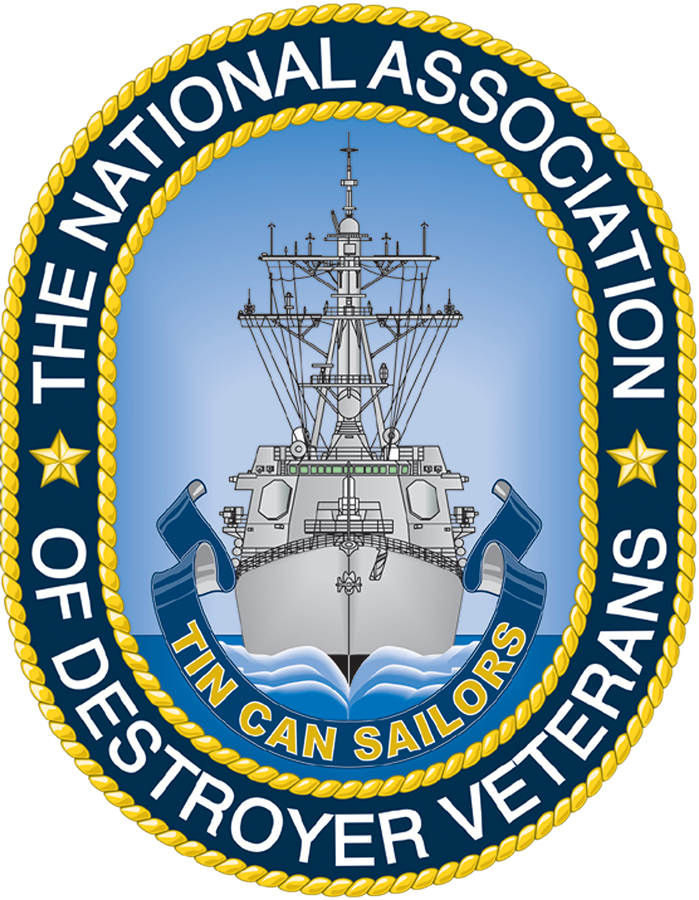USS MACKENZIE DD-614 Ship History
Dictionary of American Naval Fighting Ships, May 2022
The third Mackenzie (DD‑614) was laid down on 29 May 1941 at San Pedro, Calif., by the Bethlehem Steel Co.; launched on 27 June 1942; sponsored by Miss Gail Nielsen, a descendant [cousin] of Lt. Cmdr. Alexander S. Mackenzie; and commissioned 21 November 1942, Cmdr. Daniel B. Miller in command.
Mackenzie transited the Panama Canal on 1 March 1943, after completion of shakedown and training cruises, and continued on to spend her entire World War II career in the Atlantic and Mediterranean theaters. She arrived at Casco Bay, Maine, on 13 March and commenced coastwise escort duties. In May, she graduated to transatlantic convoy assignments, completing two voyages to the Mediterranean by the end of June. On 16 May, she made two depth charge attacks on a sonar contact; postwar review of German records proved them successful in the sinking of the German Type IXD2 submarine U‑182 (Kapitanleutnant Asmus Nicolai Clausen, commanding)
Relieved of transatlantic duties at the end of June, she reported to the staging area for the Cent Attack Force, one of three such forces to initiate the Sicilian campaign. On 9 July she departed the north African coast, arriving at Scoglitti, Sicily, the next day to screen the transport vessels and provide fire support. Three days later, the destroyer returned to convoy duty, conducting convoys between the United States and the Mediterranean until 7 October, and then engaging in escort work between North America and the United Kingdom. After repairs at Swansea, England, in the late autumn, she made two more ocean crossings before beginning operations in the Mediterranean.
On 18 March 1944, Mackenzie steamed into the harbor at Naples to report for screening, fire support and antisubmarine patrol duties in conjunction with the Anzio operation. Starting her Anzio assignments with an assist in the sinking of a two‑man submarine on the 19th, she continued to provide excellent support on this front until resuming convoy duties on 6 June. Taking up the offensive again in August, Mackenzie took part in operation Anvil, providing fire support for this invasion of southern France. On 15 September, she departed the Mediterranean and headed for Boston and a 5‑month repair and overhaul period.
The destroyer took up duty in the Mediterranean again in February 1945 and from 28 March through 21 April spent her days in the bombardment of the Franco‑Italian border and her nights on the blockade of the Gulf of Genoa. In May, having assisted in the continuance of an effective second front, Mackenzie was assigned to convoy duty in the Strait of Gibraltar. She remained in the Mediterranean after the capitulation of the Third Reich, cruising its waters until returning to the United States in July.
Upon her arrival, Mackenzie underwent overhaul preparatory to going to the Pacific. With the end of Pacific hostilities in mid‑August, however, her orders were changed and on 4 November she entered the Charleston, S.C., Navy Yard for inactivation. She was decommissioned on 4 February 1946 and in January 1947 entered the reserve fleet at Philadelphia, Pennsylvania.
Stricken from the Naval Vessel Register on 1 July 1971, ex-Mackenzie was disposed-of in support of a fleet training exercise [sunk as a target] on 6 May 1974.
Mackenzie received four battle stars for her World War II service, the first being for the antisubmarine action of 16 May 1943; the second for her participation in the occupation of Sicily (9-15 July 1943), the third for her taking part in the bombardments of the Formia-Anzio areas (12 May-4 June 1944), and finally for her participation in the invasion of southern France (15 August-25 September 1944).
